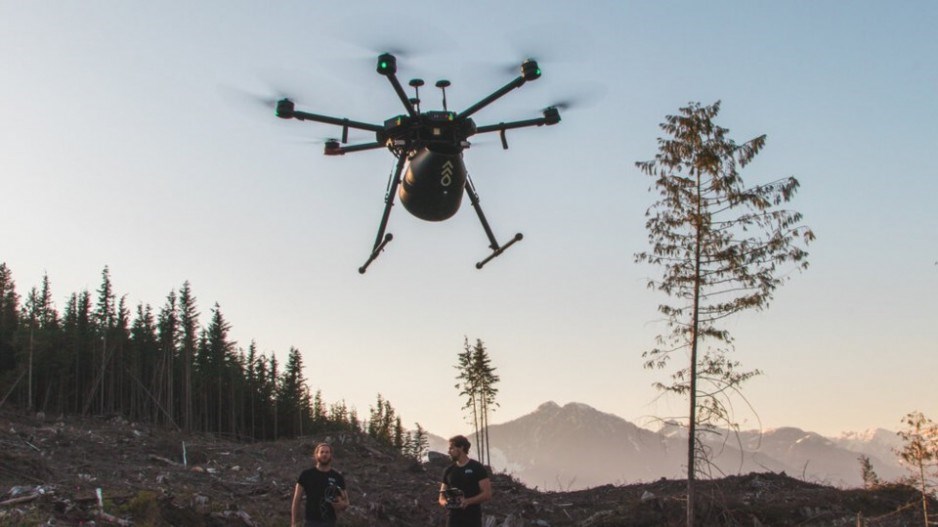The charred remains of Douglas fir and Lodgepole pine forests once sent their seeds fluttering through the air — often in the belly or beak of a bird — but not like this.
When the six rotors of these heavy-lift drones hum to life, they each propel over 1,500 seeds into an automated swarm that some hope marks the start of a revolution in tree planting.
“Reforestation is arguably the best solution we have for pulling carbon out of the air,” said Bryce Jones, co-founder and CEO of Flash Forest, a Canadian drone tree-planting company with a growing footprint in British Columbia.
“But there’s no technology. It’s literally people with bags and shovels. It’s been the same method for 100 years.”
In their short history, aerial drones have transformed our skies — in some cases delivering stunning images or medicine, in others, raining terror on soldiers and civilians alike.
Now, a handful of companies are looking to re-purpose unmanned vehicles. Their goal: germinate landscapes scarred by wildfire, and in so doing, reforest a planet that by one estimate has lost half its trees.
Working out of greenhouses in Mississauga, Ont., and with plant scientists at the University of British Columbia, Jones says they have hit upon an effective medium — both to fire the seeds through the air and keep them alive long enough to become trees.
The size of a large marble, the pods contain one seed each and enough nutrients, predator deterrents and microfungi to help the trees germinate and grow through their first summer.
Up until 2021, the company had planted roughly 50,000 trees across Ontario, Alberta and B.C. But that was mostly in small batches and was designed to hone their technology and technique.
This year, that all changed.
Releasing an automated swarm
At the edge of a charred forest, the day starts with reconnaissance.
A crew of Flash Forest pilots launch a mapping drone to survey the burned area down to the centimetre. That information is used to create three-dimensional topographical maps.
Next, an algorithm identifies and hives off areas covered by living trees, streams, lakes, roads or large rocks — all no-planting zones.
The company’s software then calculates where and at what density trees should be planted, and traces the most efficient flight paths for the swarm of drones.
On the ground, the crew will load about 1,500 seed pods into a hopper, each one attached to the bottom of the drone like a bulging potbelly. A pilot then manoeuvres three or four drones into the air, sending the swarm on automated flight paths over the burned forest. Along the way, a kind of mechanical gun fires off five seed pods per second from under the drone.
When they slam into the wildfire-charred ground, the pods are travelling at over 165 kilometres per hour — enough to bury themselves roughly 2.5 centimetres into the soil.
The idea is to arrive at a fire-scarred landscape early and scatter the pods before undergrowth makes the planting more difficult.
As Jones's brother put it to an Ontario CBC News crew last year, “Speed is our game.”
In the coming months and years, the company’s forestry team will check back to see how the seeds germinated and how many saplings survived.
If everything goes right, a forest will once again emerge from barren ground.
This spring, in its first commercial planting season, Flash Forest planted 150,000 trees, almost entirely in B.C. forests hit by wildfire. That included land scorched in the 2021 White Rock Lake fire east of Kamloops, as well as wildfire scars near Quesnel, 100 Mile House and in northern B.C.
In mid-October 2022, Canada’s Ministry of Natural Resources said it would back Flash Forest with a more than $1.3-million grant. Within two years, the government has tasked the company to plant more than a million trees.
So far the company has completed 37 projects involving 22 different tree species. But Flash Forest's ambitions are much bigger — as Canada's largest company of its kind, it plans to quadruple the number of trees it plants every year, so that by 2028, it will have planted one billion trees across the country. If carried out under the auspices of the federal government, that would represent half of Canada’s target to plant two billion trees by 2030.




